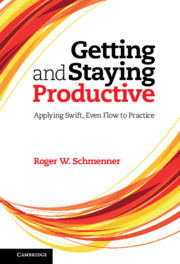3 - The old-fashioned way to make money
from Part I - The concept
Published online by Cambridge University Press: 05 April 2012
Summary
The several examples of companies whose operations model swift, even flow, mentioned in the previous chapter, may be enough to convince some people to follow these precepts, but others will certainly need more convincing. This chapter provides more evidence – of different kinds – for the worth of swift, even flow, and it shows how it is, in fact, the way big money has been made for centuries.
SWIFT, EVEN FLOW IN THE DATA
My own quest for the truth about productivity stems from the late 1970s and early 1980s. At the time the Japanese were riding high. Japanese cars and Japanese consumer electronics were making substantial inroads into the American economy, on their way to making substantial inroads into the world’s economy. US quality was under attack. W. Edwards Deming and Joseph Juran had been rediscovered by American business but the lessons they were teaching were not embraced by all. Excuses were being made about the performance of US companies. There was much talk about the lack of level playing fields. Various antidotes to the Japanese were being touted, chief among them my list of “the usual suspects,” from Chapter 1.
- Type
- Chapter
- Information
- Getting and Staying ProductiveApplying Swift, Even Flow to Practice, pp. 58 - 90Publisher: Cambridge University PressPrint publication year: 2012



